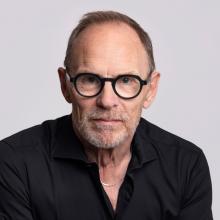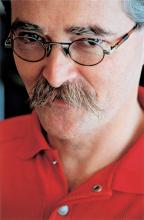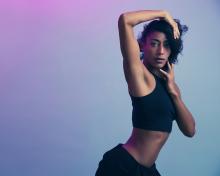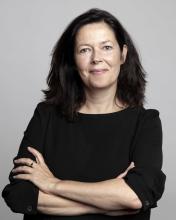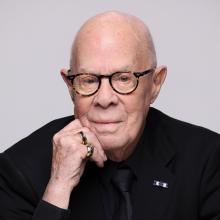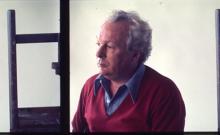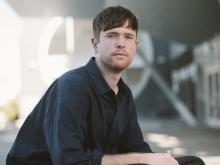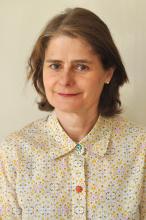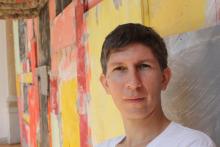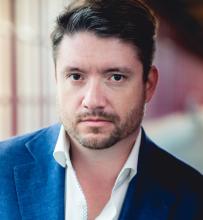Classical Symphony
Choreography
Ted Brandsen, based on his earlier work Vivace
Music
Sergei Prokofiev – Symphony No. 1 in D major (Opus 25)
Lighting Design
Bert Dalhuysen
Staging and ballet master
Sandrine Leroy
World PremiereVivace with Dutch National Ballet
13 September 2014, Dutch National Opera & Ballet, Amsterdam
World Premiere Classical Symphony with Dutch National Ballet
13 October 2020, Dutch National Opera & Ballet, Amsterdam
Duration
circa 14 minutes
Persephone
Choreography
Rena Butler
Music
Hans Abrahamsen – 10 Sinfonias: No. 5 (Adagio) and No. 8 (Con movimento)*
Dmitri Shostakovich – Chamber Symphony (Opus 83a), after String Quartet No. 4, arrangement by R. Barshai: Movement III (Allegretto)**
Ezio Bosso – Symphony No. 2 "Under the trees' voices": Movement III (Scherzo)***
Musical advisor
Jan Pieter Koch
Costume design
Tatyana van Walsum
Lighting design
K.J
Ballet master
Judy Maelor Thomas
World Premiere with Dutch National Ballet
11 September 2024
Duration
circa 15 minutes
* Music Published / Licensed by © Wilhelm Hansen, Copenhagen / Albersen Verhuur B.V., ’s-Gravenhage
** Music Published / Licensed by © Internationale Musikverlag H. Sikorski, Berlijn / Albersen Verhuur B.V., ’s-Gravenhage
*** Music Published / Licensed by © Casa Ricordi, Milaan / Albersen Verhuur B.V., ’s-Gravenhage
Four Schumann Pieces
Choreography
Hans van Manen
Music
Robert Schumann – String Quartet No. 3 in A major (Opus 41), in an arrangement for string orchestra by Martin Yates
Costume and set design
Jean Paul Vroom
Adapted costume design
Oliver Haller
Lighting design
Bert Dalhuysen
Ballet masters
Rachel Beaujean
Larisa Lezhnina
World premiere
The Royal Ballet, 31 January 1975, Royal Opera House, Covent Garden, London
Premiere with Dutch National Ballet
2 June 1976, Rotterdamse Schouwburg, Rotterdam
Duration
circa 32 minutes
Blake Works I
Choreography
William Forsythe
Music
James Blake – I Need a Forest Fire, Put That Away and Talk to Me, The Colour in Anything, I Hope My Life, Waves Know Shores, Two Men Down, and f.o.r.e.v.e.r. from the album The Colour in Anything (2016)*
Set design
William Forsythe
Costume design
Dorothee Merg
William Forsythe
Lighting design
Tanja Rühl
Sound design
Niels Lanz
Staging
Jodie Gates
Ayman Harper
Ballet master
Guillaume Graffin
World premiere
4 July 2016, Ballet de l’Opéra national de Paris, Opéra Garnier, Paris
Premiere with Dutch National Ballet
10 June 2023, Dutch National Opera & Ballet, Amsterdam
Duration
circa 25 minutes
* (P) 2016 Polydor Ltd. (UK) ‘I Need A Forest Fire’: written by Justin Deyarmond Edison Vernon, published by April Base Publishing, administered by Kobalt Music Publishing Ltd.
Musical accompaniment
Het Balletorkest conducted by Nathan Brock
Production manager
Anu Viheriäranta
Stage managers
Wolfgang Tietze
Kees Prince
Production supervisor
Sieger Kotterer
Senior carpenter
Edwin Rijs
Lighting supervisor
Wijnand van der Horst
Senior lighting managers
Coen van der Hoeven
Angela Leuthold
Followspotters
Laura Nagtegaal
Carola Robert
Anton Shirkin
Marleen van Veen
Followspotters coordinator
Ariane Kamminga
Geluidstechnicus
Florian Jankowski
Assistant costume production
Michelle Cantwell
First dresser
Andrei Brejs
Introductions
Jacq. Algra
Lin van Ellinckhuijsen
Total duration
circa two hours and twenty-five minutes, including two intervals
Dutch Ballet Orchestra
First violin
Sarah Oates, concert master
Cordelia Paw
Kotaro Ishikawa
Suzanne Huynen
Robert Cekov
Jan Eelco Prins
Tinta Schmidt von Altenstadt
Majda Varga-Beijer
Tineke de Jong
Alexander Pavtchinskii
Anna Sophie Torn
Inger van Vliet
Second violin
Radka Dijkstra-Dohnalová
Yumi Goto
Willy Ebbens
Christiane Belt
Olga Caceanova
Saskia Frijns
Dick de Graaff
Inge Jongerman
Marina Meerson
Irene Nas
Viola
Naomi Peters
Arwen Salamavan der Burg
Maria Ferschtman
Joël Waterman
Eduard Ataev
Frank Goossens
Merel van Schie
Karen de Wit
Cello
Artur Trajko
Lies Schrier
Evelien Prakke
Willemiek Tavenier
Ketevan Roinishvili
Xandra Rotteveel
Contrabass
Gabriel Abad Varela
Lucía Mateo Calvo
Silvia Gallego Sánchez
Wimian Hernandez
Florian Lansink
Flute
Sarah Ouakrat
Marie-Cécile de Wit
Oboe
Juan Esteban
Mendoza Bisogni
Avesta Yusufi
Ainhoa Pérez Echepare
Clarinet
Ina Hesse
Joris Wiener
Bassoon
Janet Morgan
Maud van Daal
Horn
Ward Assmann
Christiaan Beumer
Trumpet
Ad Welleman
Erik Torrenga
Timpani
Peter de Vries





